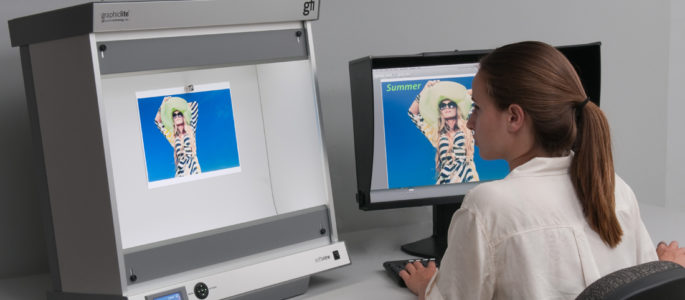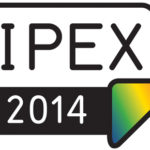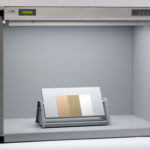November 12, 2019
What you need to know about soft proofing
What is soft proofing?
Soft proofing is the ability to view an accurate representation of a digital file on a monitor before it is printed. This visual representation (soft proof) of the final artwork replaces a traditional hard copy proof and can serve as a contract between supplier and buyer. If properly implemented and maintained a soft proofing system can outperform a traditional hard copy proofing workflow in speed, distribution, economy, consistency, predictability, and efficiency.
Soft proofing is not a one-size-fits-all process. There are several levels of soft proofing:
- Content Soft Proofing: Viewing a PDF file for content accuracy, not an accurate representation of color. Requires PDF writing software and a device to read the PDF.
- Color Accurate Soft Proofing: Allows for proofing of content and color by accurately simulating how a print will appear using a monitor. This method requires color managed software, a calibrated monitor, a monitor calibration tool, ICC profiles, and an ISO 3664:2009 compliant light booth for the comparison of monitor and original hard proofs.
- Contract Soft Proofing: The use of calibrated computer monitors and software to check the accuracy of digital files used for printing. Includes all the features of color accurate soft proofing plus tools for sharing and viewing files, it facilitates a 100% digital workflow that eliminates the need for hard copy proofs.
- Collaborative Contract Soft Proofing: Adds the ability to share annotations and to approve files to contract soft proofing workflow. Includes all the features of color accurate soft proofing plus tools for sharing, viewing, commenting, approving, and signing off on files. Collaborative contract soft proofing allows multiple users to view the same file at the same time – it is a 100% digital workflow that eliminates the need for hard copy proofs.
What is required to implement Contract Soft Proofing?
- A high-quality calibrated monitor which acts as an output device. Eizo, NEC, and BenQ are good quality monitors.
- A USB instrument or monitors embedded with a swing sensor to calibrate the monitor.
- Custom ICC profiles for the monitor and press.
- Color accurate soft proofing software. Remote Director is a popular solution.
- D50 light booth that conforms to the ISO 3664:2009 viewing standard. GTI’s iQ viewing stations automatically match luminosity of the viewer and monitor.
What are the benefits of soft proofing?
Soft proofing allows you to better set expectations and to minimize unexpected results during printing. It gives you more control over color reproduction in images and overall designs.
Early in the design process, soft proofing can help to identify colors that cannot be accurately reproduced allowing you to make adjustments before creating an initial proof.
Advantages of soft proofing:
- Efficiency
- Many people in different locations can review one proof at the same time
- Easily consolidate comments, edits, and approvals in one file
- Speed
- Eliminate the need to print and deliver hard proofs
- Approval cycles can go from days to hours
- Time to market can be shortened
- Flexibility
- More time for creativity
- Easily and quickly collaborate with stakeholders all over the world
- Better accommodate last minute changes
- Affordability
- Reduce printer, paper, and ink expense
- Lower shipping charges
- Save production time
- Environmentally-friendly
- Use less paper and toner
- Reduce emissions
- Predictability
- All parties looking at the same proof
- Printed products more closely match screen expectations
- View a product as it will print earlier in the workflow
- Simulate substrate changes
Soft proofing is a time, resource, and money saving process
A soft proofing workflow can provide significant savings. With a typical hard proof workflow the process is: print proof > evaluate proof > adjust color > print another proof > repeat until the desired outcome is reached. In this scenario it can often take two, three, or more rounds of hard proofs to obtain accurate color. The materials used in hard proofs, such as ink and paper, can be costly. In addition, you’ve consumed a considerable amount of production time making multiple revisions.
While soft proofing provides several benefits to the supply chain, there are some challenges to consider:
- Soft proofing requires the development of a workflow that links all internal and external stakeholders.
- All parties in the workflow need to agree to implement soft proofing and follow the processes.
- Designers and all other parties involved in the soft proofing process need to learn to trust the image on the monitor.
Who can use a soft proofing system?
If you create anything digitally that either will be printed or has the potential to be printed, you can use a soft proofing system. Industries that can benefit from soft proofing include packaging, consumer goods, advertising, publishing, and more.
Summary
- Soft proofing enables a 100% digital workflow that improves efficiency, predictability, consistency, flexibility, and affordability.
- Soft proofing and hard proofing can be used in conjunction with one another.
- Soft proofing brings significant changes to a workflow.
- All stakeholders in the design process need to understand their responsibilities and develop processes.
- Soft proofing saves money and reduces approval times.
- There are start-up costs to implementing a soft proofing system – software, quality monitors, and viewing booth.
- The benefits of soft proofing can be significant. It provides more stable and repeatable output in multiple locations in less time at lower cost.
- Soft proofing is a business and creative decision.
- Contract soft proofing is here and gaining traction.
To learn more about implementing a soft proofing workflow contact us.






